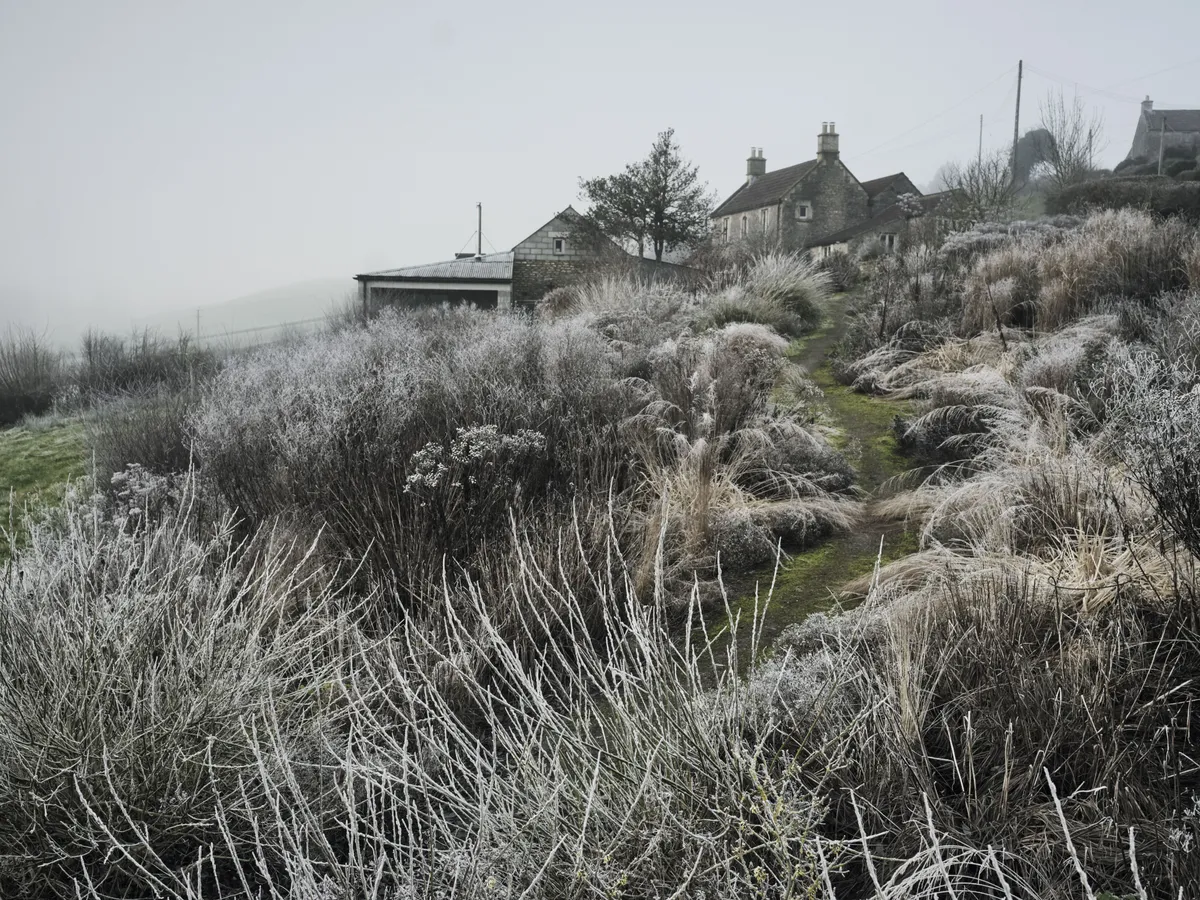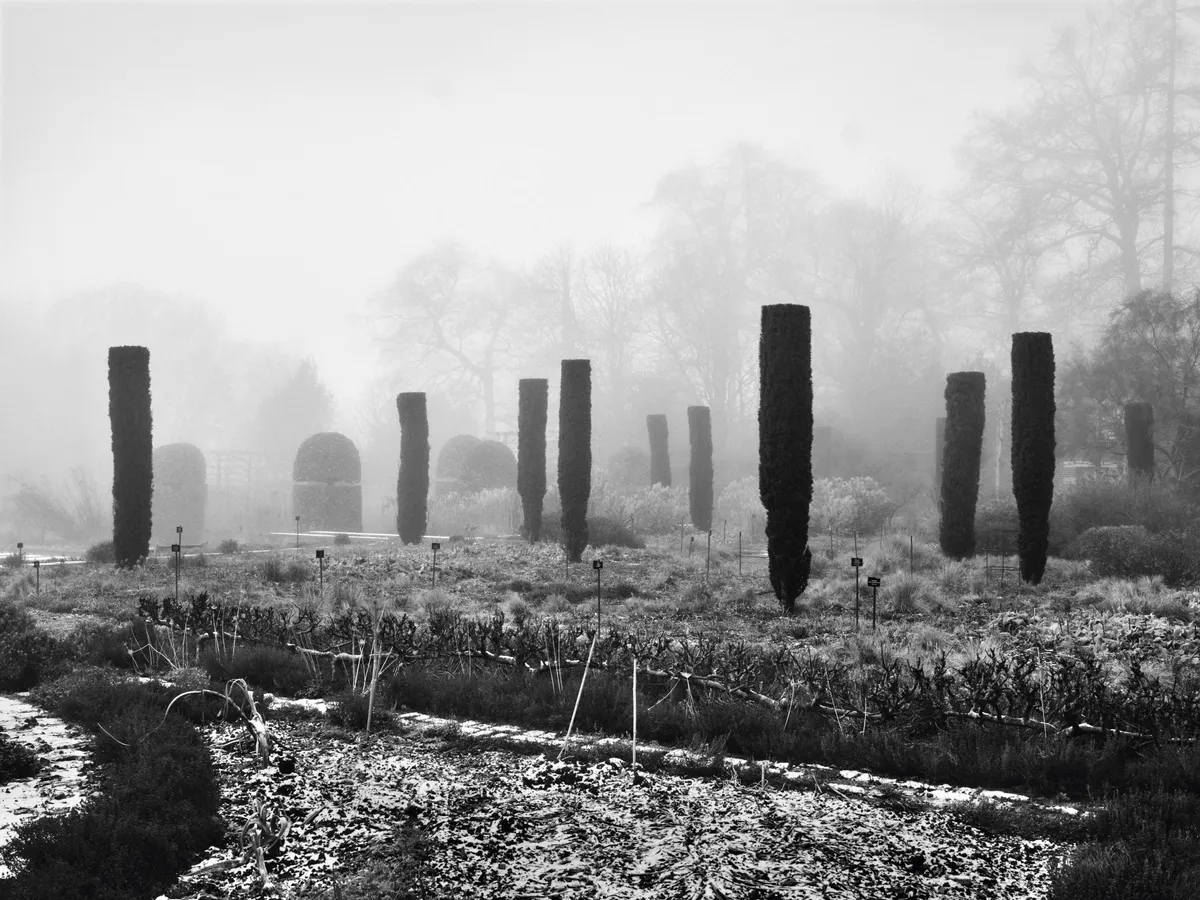The secrets of top winter gardens
Dan Pearson's Hillside
In 2010, landscape designer Dan Pearson moved from London to a 19-acre former farm in an idyllic valley near Bath, and has been developing a garden there ever since. In all his work, public or private, Dan describes what he is striving for as a “heightened naturalism”, and his own garden is perhaps the ultimate expression of this: somewhere he can be absolutely true to his own ideology.

Dan’s intimate connection with the land and garden means that he observes every moment of its descent into winter. “Summer is always what you’re working towards, but there is a wonderful moment in September when you just let go. The garden slows down and you can take your hands off the reins. You’re able to look without having to do.
"Autumn is very spectacular here, with incredible colour, but then the leaves drop, frost triggers the winter descent, and you are suddenly left with the skeletons. I like to watch the whole process of decay, the drawing back into the landscape.” Most things are left to die back naturally, and the garden gradually starts collapsing, plant forms left on the earth to decompose and to be drawn back down by earthworms. “Winter here is a time for doing, readying and making changes, to be lost in actions and practicalities, with a mind’s eye on the spring. At the beginning of January, I make a list of winter work that will take us through to the middle of February, the moment the snowdrops are in full swing, letting me know that the garden will also be stirring.”
Piet Oudolf's Hummelo
Dutch designer Piet Oudolf is one of the greatest practitioners of perennial planting design of our time, and his own garden at Hummelo, 75 miles east of Amsterdam, is the personal expression of his life’s work. Since 1982, this garden has been the hub of Piet’s experimental approach, and until 2010 it was also home to the nursery he ran with his wife, Anja, which specialised in robust, naturalistic perennials.

In his schemes, Piet Oudolf ’s choice of plants is dictated less by colour and more by texture and form. Contrasting flower and foliage shapes create the initial drama, and as these flowers fade, they offer correspondingly shaped seedheads that retain the intrinsic character of the plant. Choosing a good number of robust plants that hold their structure through winter is key to the seasonal longevity of his schemes.
From the beginning of December, with the first frosts, the garden at Hummelo begins to take on its winter mantle. Almost overnight, the strong autumn colours fade to leave a more subtle tableau, with a neutral palette ranging from darkest brown to bone white. The planting mass is dynamic, with repetitive motifs that lead the eye and grasses everywhere, which soften and bring movement to the more static perennial forms.
Separating the garden from the surrounding flat farmland is a mixed native hedge that has been clipped into undulating forms. In winter, these semi-transparent boundaries can be intensely beautiful – backlit by silver light that highlights the labyrinth of branches, or filtering rays of low winter sun that creep through to illuminate the grasses.
Tom Stuart-Smith's Broughton Grange

At Broughton, the garden as a whole plays to the landscape around it, framing views and emulating the lines of hills, fields and woodland beyond. As Tom describes: “The walled garden at Broughton is very much conceived as being part of the landscape. I saw it almost as a receptacle for its context; not one that is in any way copied, but one that drew in the views, responded to the topography, the density and material quality of the landscape.
The garden uses native plants and familiar landscape textures, but uses them in a way that is much more organised and formalised than in the landscape beyond. Beech, box, Irish yew, grasses and water became the key elements of the winter garden. I was at the time very preoccupied with the idea that the garden could articulate strong contrasts, of architectural line set against the curves of nature, of winter’s austerity against the abundance of summer, or if one was taking this to a more human dimension, the idea of the Apollonian in contrast to the Dionysian. This is what is expressed at Broughton.”
BUY THE BOOK
This is an edited extract taken from Winter Gardens with images by Andrew Montgomery and text by Clare Foster. Published by Montgomery Press, priced £45, it’s available from montgomerypress.co.uk.
